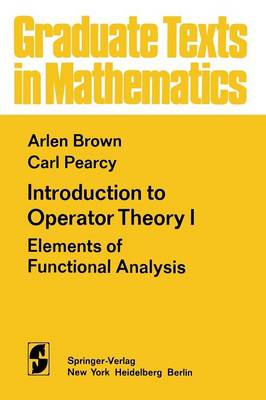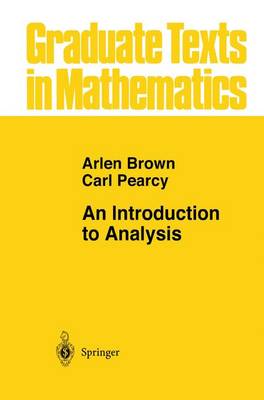Graduate Texts in Mathematics
2 primary works
Book 55
This book was written expressly to serve as a textbook for a one- or two-semester introductory graduate course in functional analysis. Its (soon to be published) companion volume, Operators on Hilbert Space, is in tended to be used as a textbook for a subsequent course in operator theory. In writing these books we have naturally been concerned with the level of preparation of the potential reader, and, roughly speaking, we suppose him to be familiar with the approximate equivalent of a one-semester course in each of the following areas: linear algebra, general topology, complex analysis, and measure theory. Experience has taught us, however, that such a sequence of courses inevitably fails to treat certain topics that are important in the study of functional analysis and operator theory. For example, tensor products are frequently not discussed in a first course in linear algebra. Likewise for the topics of convergence of nets and the Baire category theorem in a course in topology, and the connections between measure and topology in a course in measure theory. For this reason we have chosen to devote the first ten chapters of this volume (entitled Part I) to topics of a preliminary nature. In other words, Part I summarizes in considerable detail what a student should (and eventually must) know in order to study functional analysis and operator theory successfully.
Book 154
As its title indicates, this book is intended to serve as a textbook for an introductory course in mathematical analysis. In preliminary form the book has been used in this way at the University of Michigan, Indiana University, and Texas A&M University, and has proved serviceable. In addition to its primary purpose as a textbook for a formal course, however, it is the authors' hope that this book will also prove of value to readers interested in studying mathematical analysis on their own. Indeed, we believe the wealth and variety of examples and exercises will be especially conducive to this end. A word on prerequisites. With what mathematical background might a prospective reader hope to profit from the study of this book? Our con scious intent in writing it was to address the needs of a beginning graduate student in mathematics, or, to put matters slightly differently, a student who has completed an undergraduate program with a mathematics ma jor. On the other hand, the book is very largely self-contained and should therefore be accessible to a lower classman whose interest in mathematical analysis has already been awakened.

